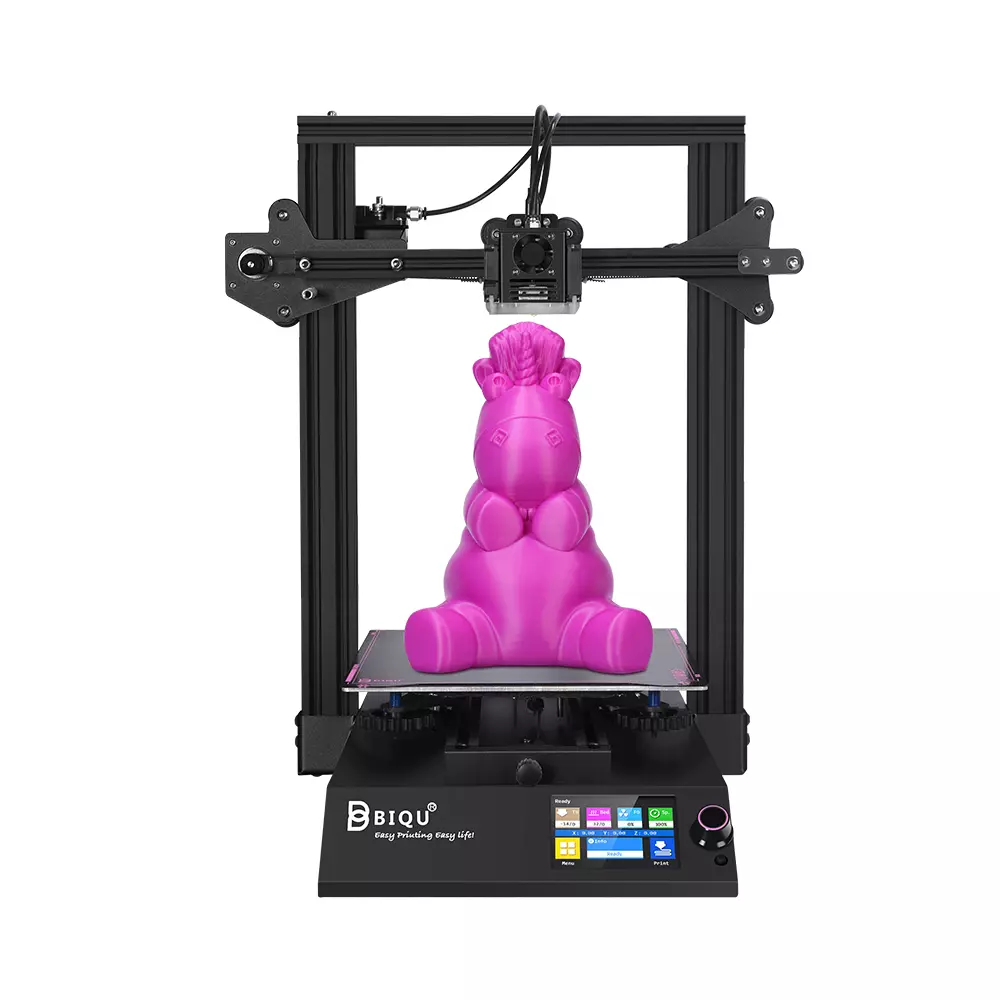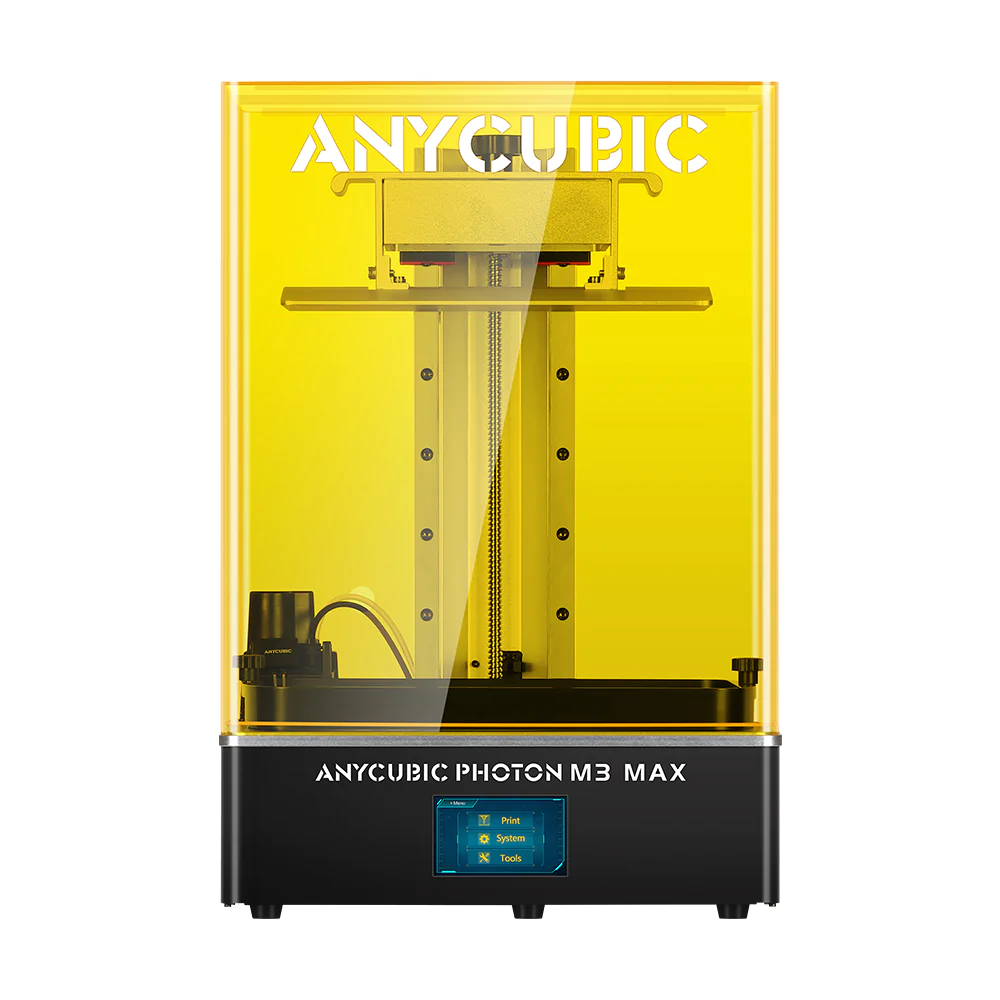Compare BIQU B1 vs Photon M3 Max
Comparison between the best 3D printers
Choose the best 3D printer at the best price. The cheapest 3D printers are here.
Buy a 3D printer here with 3D Fila.
 |
 |
|
| Model | BIQU B1 |
Photon M3 Max |
| Printing Material | Filament | Resin |
| Buy Filament for BigTreeTech BIQU B1 | Buy Resin forAnycubic Photon M3 Max | |
| Estimated price | $269,00 | $960,00 |
| Manufacturer | BigTreeTech | Anycubic |
| Release Year | 2020 | 2022 |
| Print Volume [mm] | 235x235x270 | 298x164x300 |
| Printer Size [mm] | 412x402x492 | 400x408x596 |
| Weight [kg] | 8,00 | 21 |
| Power Loss Recovery | YES | NO |
| Maximum Resolution [mm] | 0,1 | 0,01 |
| Processor | 32 Bits BTT SKR V 1.4 | |
| Display | Touchscreen TFT 3,5'' | Display touchscreen 4,3'' |
| Power Supply | 24V / 360W | 150 W |
| Connectivity | SD / USB | USB / Wi-Fi |
| Operating systems | Windows, Mac, Linux | Windows, Mac, Linux |
| Date of registration in the system | 2021-04-14 | 2023-01-19 |
| Release date | 2020 | 2022 |
| Extra features | The BIQU B1 is an advanced 3D printer with a silent 32-bit BTT SKR V1.4 motherboard and ARM Cortex-M3 CPU, offering DIY interfaces (I2C, SPI, WiFi) and dual Z-axis. Its dual BTT B1 TFT35 V3.0 operating system allows real-time monitoring and multiple printing modes, including G-code visualization effects. It stands out for its BIQU SSS (Super Spring Steel), ensuring easy model adhesion and simplified removal, with the possibility of using it on both sides. It includes a filament sensor, automatically pausing printing in case of filament breakage. The multicolored RGB lights integrated into the hotend allow you to view the printing status even at night. Additional notes include the need for a BIQU-specific Type-C cable and extra interfaces for smart filament sensor and BL Touch. | The Anycubic Photon M3 Max printer stands out for its large build volume of 298 x 164 x 300 mm, allowing the printing of large and detailed models. It has a 13.6-inch 7K monochrome screen, offering XY resolution of 46 microns, ensuring high-precision prints. It includes an innovative automatic resin refill system and a frosted glass-style FEP blade, improving part release. Its design includes a two-part acrylic cover, facilitating internal access, and a printing platform with aluminum side handles for easy handling. |
| Support for multiple colors and materials (AMS and CFS) | NO | NO |
Notes * |
||
| Cost-benefit | 7 / 10 | 7 / 10 |
| Hardware | 2 / 10 | 3.5 / 10 |
| Tela | . | . |
| Print volume | 3 / 10 | 3 / 10 |
| Performance | 1 / 10 | 9 / 10 |
Conclusion |
| In conclusion, the comparison between the BIQU B1 and Anycubic Photon M3 Max highlights significant differences, particularly in their intended applications, print capabilities, and overall value. The BIQU B1, launched in 2020, presents itself as an affordable option ideal for hobbyists and those new to 3D printing. It offers essential features such as power loss recovery, a user-friendly touchscreen interface, and a silent motherboard, making it a well-rounded choice for smaller projects. Its print volume is commendable for its price point, and it demonstrates a good balance between cost and performance with a reasonable emphasis on user add-ons and conveniences, achieving a cost-benefit score of 7/10. Conversely, the Anycubic Photon M3 Max, released in 2022, is tailored for users requiring high precision and larger-scale prints. With its advanced print resolution and significant build volume, it caters well to professional applications or detailed prototypes. However, this model comes at a premium price, emphasizing performance over cost efficiency and lacking features like power loss recovery, which is a notable drawback for continuous operation. The Photon M3 Max scores impressively on performance but the overall value propositions may not appeal to budget-conscious consumers. Ultimately, the choice between these two printers depends on the user’s specific needs. For those seeking a cost-effective entry into 3D printing with reliable performance, the BIQU B1 is an excellent choice. However, for serious users focused on precision and larger projects who are willing to invest more, the Anycubic Photon M3 Max offers substantial advantages. Thus, each printer serves a different market segment, making the evaluation of "best" highly subjective based on individual requirements and budget considerations. |

